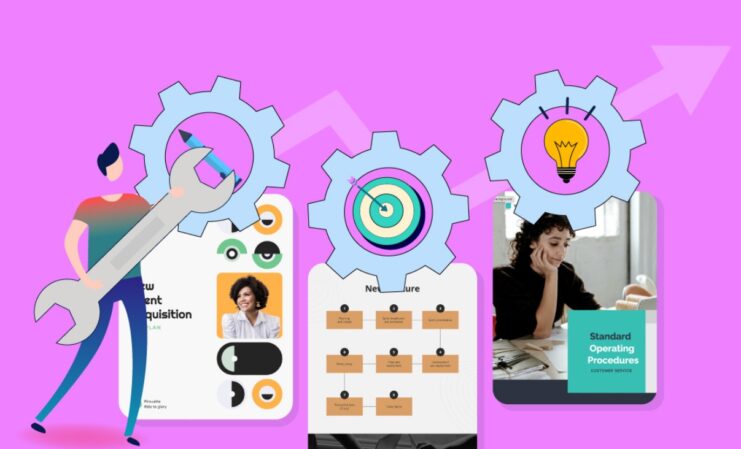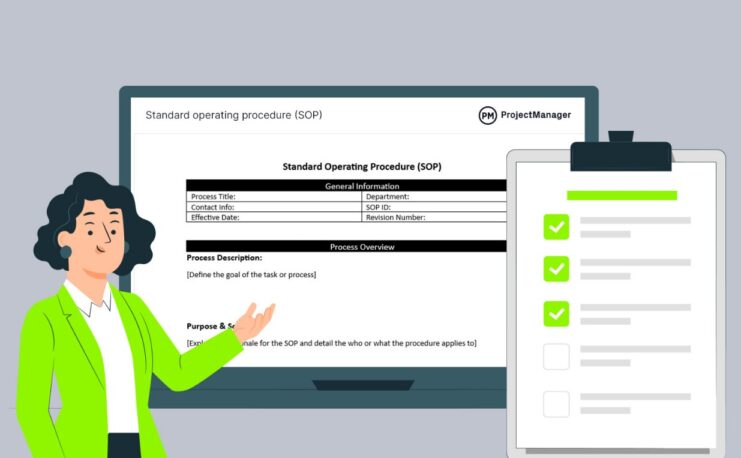Building an effective Standard Operating Procedures (SOP) training program is crucial for the seamless operation and success of any organization.
This comprehensive guide provides insights and strategies for creating and implementing a training program that not only educates but also engages employees, ensuring that SOPs are not just understood, but also integrated into daily practices.
Identifying the Scope and Objectives of SOP Training
The initial step in developing an effective standard operating procedures education program is to pinpoint the exact scope and objectives. Learn more at Lean Community.
This involves understanding the specific processes that require standardization and the goals you aim to achieve through this training. Are you looking to improve efficiency, ensure compliance, or reduce errors?
Clearly defining your objectives will shape the entire training program, ensuring that it is focused and effective.
Designing the Training Content

Once you have your objectives in place, the next phase is designing the content. This is where the essence of your SOPs is translated into educational material. It’s crucial that the content is comprehensive yet easily digestible.
Complex procedures should be broken down into manageable segments. The use of real-life examples, scenarios, and case studies can make the content more relatable and easier to grasp. The goal here is not just to inform but to make the SOPs resonate with your employees’ daily tasks.
Choosing the Right Training Methods
The effectiveness of your SOP training also hinges on the methods you use. In today’s diverse work environment, a one-size-fits-all approach does not work.
Consider a blend of methods – from traditional classroom settings to e-learning modules and interactive workshops. Each method has its own merits and can be used in conjunction to cater to different learning styles.
For instance, while e-learning offers flexibility, interactive workshops can enhance understanding through practical application.
Ensuring Engagement and Participation
A major challenge in any training program is keeping participants engaged. To combat this, incorporate interactive elements such as quizzes, group discussions, and role-playing exercises.
These activities not only break the monotony but also help in reinforcing the learning. Encouraging questions and feedback can also foster a more interactive and open learning environment.
Assessing and Reinforcing Learning
Assessment is key to understanding the effectiveness of your training program. Regular tests or practical assessments can help gauge how well the participants have understood the SOPs.
Moreover, continuous reinforcement is vital. This can be achieved through refresher courses, providing access to learning materials, and integrating SOPs into everyday work culture. The idea is to keep the knowledge fresh and top of mind.
Monitoring and Continuously Improving the Training Program

Lastly, an SOP training program should not be static. It needs to evolve with changing procedures, technologies, and workforce dynamics. Regular feedback from participants and trainers can provide valuable insights into what’s working and what’s not.
This feedback, combined with performance metrics, can guide necessary adjustments and improvements to the program.
Customization for Varied Roles
Customization is key when developing an effective SOP training program. Not all employees have the same responsibilities or require the same level of detail in their education.
Recognizing this, organizations should tailor their training content to accommodate the varied roles within their workforce. For instance, front-line employees may need detailed, step-by-step instructions for specific tasks, while managers may require a broader understanding of how SOPs align with overall objectives.
By customizing training content, organizations ensure that employees receive the most relevant and valuable information for their roles, enhancing their comprehension and application of SOPs.
Documentation and Version Control
A robust documentation and version control system is the backbone of any SOP training program. To maintain consistency and accuracy, organizations must establish a centralized repository for SOP documents.
This repository serves as the single source of truth, ensuring that all employees access the most up-to-date procedures. Additionally, version control mechanisms track changes and revisions, providing a clear audit trail.
This not only aids in compliance but also promotes accountability. Employees can easily identify when and why changes were made, facilitating transparency and effective communication across the organization.
Compliance and Regulatory Training
In certain industries, compliance with regulations and standards is non-negotiable. SOPs play a crucial role in ensuring that employees adhere to these requirements. An effective SOP training program must address compliance and regulatory training comprehensively.
It begins by identifying the specific regulations and standards relevant to the organization’s operations. The training content should then clearly articulate how SOPs align with these requirements, emphasizing the consequences of non-compliance.
Regular updates and assessments are essential to keep employees informed about evolving regulations, making sure that they continue to adhere to legal and industry standards.
Continuous Feedback Loop

A continuous feedback loop is integral to the improvement of the SOP training program. Encouraging participants to provide feedback on the training content, delivery methods, and overall experience is essential.
This feedback should be actively sought at various stages, from initial training sessions to ongoing refresher courses. By gathering input from employees, trainers, and supervisors, organizations can identify areas that require adjustment and enhancement.
Moreover, this feedback loop fosters a culture of open communication, empowering employees to voice concerns, seek clarification, and actively engage in the learning process, ultimately contributing to the program’s effectiveness.
Integration with Performance Appraisals
Linking SOP training completion to performance appraisals aligns training with career development and organizational goals. When employees understand that their mastery of SOPs directly affects their performance evaluations and career advancement, they are more likely to engage actively in the training process.
Organizations can set clear expectations for employees to demonstrate their knowledge and application of SOPs in their roles.
Successful integration with performance appraisals incentivizes employees to consistently apply SOPs in their work, ensuring that the training program has a lasting impact on daily practices and organizational success.
Case Studies and Success Stories
Real-world examples in the form of case studies and success stories can significantly enhance the effectiveness of an SOP training program. These stories illustrate how adherence to SOPs has positively impacted organizations, emphasizing their practical relevance.
Case studies can highlight instances where following SOPs led to increased efficiency, improved quality, reduced errors, and enhanced compliance. Success stories showcase employees who have excelled in their roles by effectively implementing SOPs.
End Note

In conclusion, developing and implementing an effective SOP training program is essential for organizational success.
Customization ensures that training content aligns with varied employee roles, maximizing its relevance and impact. Robust documentation and version control maintain consistency and transparency in SOP management.












